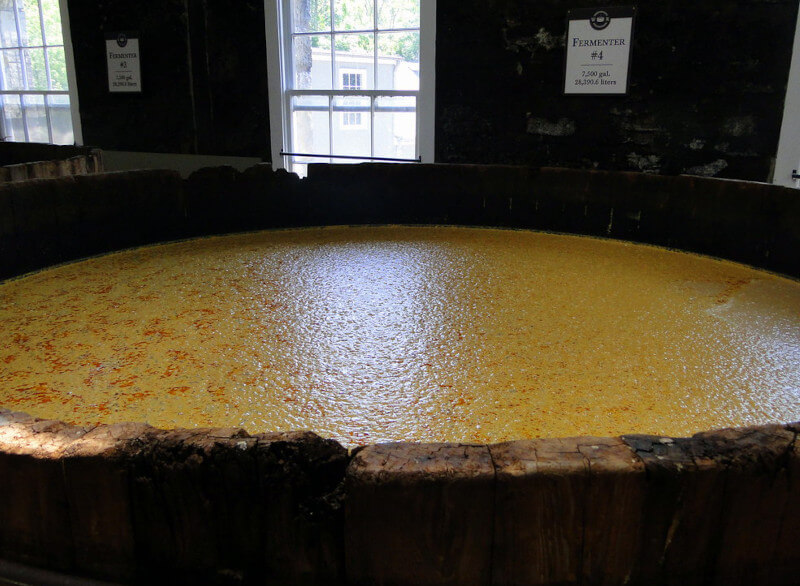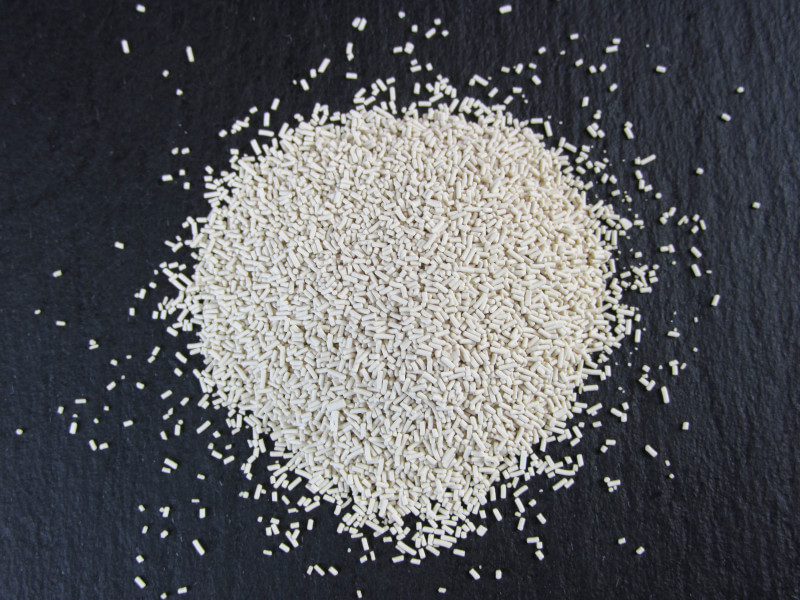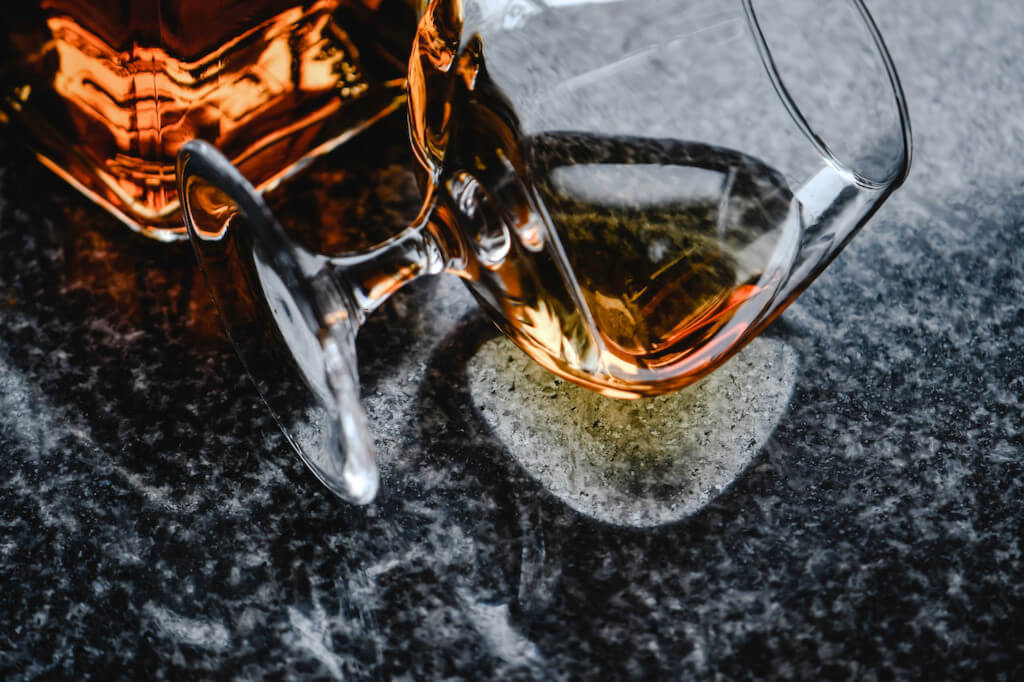Making your bottle of moonshine is an appealing concept, whether you’ve watched shows on how to create bourbon or are just curious about whether or not you can make it at home. If you’re thinking about trying your hand at distilling, you should read this article beforehand so you know what you’re doing.
Materials and Tools
- 51% of bourbon is maize, with the rest coming from a variety of grains. Barley, wheat, or rye are the usual other ingredients.
- For a mixture weighing 10 kilograms, this means you’ll need 5.1 kilograms (11.2 pounds) of maize and 4.9 kilograms (10.8 pounds) of whichever grain you’d want to use instead. About 5 gallons of bourbon whiskey need about 10 pounds of corn.
- You’ll also need a corn mill and, of course, corn. Brewer’s yeast is essential to kickstart the fermentation process.
- One of the most important tools you’ll need is a skill, which you’ll use to extract the alcohol from the fermenting mash.
- You’ll have to put together the linked product yourself after ordering it. New charred oak barrels, typically five gallons in size, are used to age bourbon whiskey.
Wheat

- When you’ve finished milling the grains, fill your 10-gallon brew kettle with water to the 5.5-gallon mark. Bring the water to a boil at a temperature of 212 degrees and then remove it from the heat. Get going on incorporating the grain mixture. Keep stirring for around 8 minutes in total.
- After 30-60 seconds of churning, the water should reach a temperature of 150 degrees, at which point you can add your 1.5 pounds of barley or wheat.
- At 86 degrees, while stirring the mixture, add one packet of the distiller’s yeast. For the next few minutes, keep stirring to make sure the yeast is integrating well into the bourbon mash.
- A nice saucepan full of dough-like stuff with a cornbread aroma is what you should be seeing.
Bourbon Whiskey is Made by Following These Steps
First, we need to settle on the mash bill.
Learn How to Mash
The ratios of the mash bill ingredients in bourbon production are far more precise than in beer brewing.
The Recipe For Bourbon Mash
- The term “mash” refers to the process of fermenting grains into bourbon. You’ll need grain to make your bourbon mash. Our mash bill will consist of the typical grains used in bourbon production: corn, rye, barley, or wheat.
- Try different proportions of corn, rye, and wheat (or barley) in your brewing, but keep the ratio at 70% for instructional purposes. Using wheat will soften the taste of your bourbon.
- Corn and rye grains can be ground together in a corn and grain mill, such as the Corona. You’ll need three passes to achieve the desired mill texture. The barley or wheat mixture must be added after all the other grains have been added.

Oh, and by the way…
You might think of the “mash bill” as the ingredients list for your brew. The Federal Standards of Identity for Distilled Spirits require that bourbon contain at least 51% corn in its recipe. Yes, corn is the primary ingredient in bourbon. You may have some leeway with the remaining components, so feel free to experiment with your homemade bourbon recipe.
Rye, malted barley, and wheat are the three most popular cereal grains used to make bourbon. However, quinoa, amaranth, and buckwheat are gaining ground as viable substitutes. If you prefer a spicy kick to your bourbon, try this.
The Best Option is Rye
It adds a hint of pepperiness and spice, with an aftertaste reminiscent of tortilla chips. Rye is used in larger quantities in whiskies than any other grain. However, malted barley is what gives bourbon its signature smokey, nutty, and sometimes chocolaty flavors, while wheat is what smoothes things out and adds a touch of sweetness.
The Process
- Seven pounds of cornmeal is a good place to begin. Then, select your other grains and add 1.5 pounds of each.
- If you’re just getting started, it’s suggested that you use 75% corn maize, 15% rye, and 10% barley malt. The resulting mash and flavor would be authentic bourbon.
- A bourbon mash must be made. Get started by getting the grains ready. The first step is to ground them into a powder before adding water. A hammer mill or rolling mill may be used by some manufacturers. The next step is to activate the grain’s enzymes so that the starches may be broken down. This requires repeatedly grinding them between three and four times. See our mash recipe above.
What’s Next?
- The grains are roasted, releasing even more enzymes. Alpha amylase is the name of one of these enzymes. The starches in the mash are converted into sugar using this enzyme.
- You probably already know that sugar is required for the fermentation of any alcoholic beverage.
- Malted barley, in particular, is a staple in any bourbon mash bill because it contains a naturally occurring enzyme called Amylase.
- Malted barley should be introduced as the last grain and the temperature should be lowered.
- While waiting for the mixture to reach a near-boiling temperature, stir it occasionally. Check the temperature of your mash using a thermometer and take it off the fire just before it boils.
- Brewers name the resulting liquid, wort, because of its sugar content.
Mash Fermentation
- This is when the fermentation process for bourbon departs from that of other alcoholic beverages. The whole mash is dumped into the fermentation vat as opposed to filtering it and collecting only the wort.
- All of them, are both liquid and solid.
- The sour mash and distiller’s yeast are combined at this point.
- Set-back, or sour mash, is the remaining mash from the distillation process before. Because of its sour flavor and properties, it was given that moniker.
Do We Need It?
The pH of your ferment is an important factor in the success of your bourbon fermentation. The acidity of sour mash inhibits bacterial growth, allowing yeast to flourish in the mash.
Some bottles of bourbon may still have the words “sour mash” written on them. At first, this is a major selling point. These days, however, the sour mash is used in almost all bourbon production, and this has become a major selling point for most brands.
Hops Were Commonly Used to Filter Impurities Out of Bourbon Mash
Once the yeast has been added, the wort must be left alone to ferment. When fermenting bourbon, it’s important to keep a few things in mind.
The First Consideration is the Yeast Variety
 You may speed up the bourbon fermentation process by using turbo yeast. It’s also important to think about the ambient temperature when fermenting bourbon. The fermentation process accelerates at higher temperatures. It will take more time if the room temperature is low. Your ferment may turn out differently depending on how much sugar you use. It will take longer to ferment if, for some reason, there is more sugar than usual.
You may speed up the bourbon fermentation process by using turbo yeast. It’s also important to think about the ambient temperature when fermenting bourbon. The fermentation process accelerates at higher temperatures. It will take more time if the room temperature is low. Your ferment may turn out differently depending on how much sugar you use. It will take longer to ferment if, for some reason, there is more sugar than usual.
After 18 to 48 hours have passed after the yeast has been added, you can taste the liquid to confirm that fermentation has commenced. Air bubbles or pockets should be rising to the airlock. That means the yeast is alive and well, and fermentation of the wort has begun.
What if There Aren’t Any Air Pockets?
That may indicate that fermentation has failed to occur. In that scenario, make sure the container’s lid seals completely to prevent any air from escaping. The wort can ferment for 14 days if there are no signs of trouble.
Filter the Mixture
If the bubbler stops producing bubbles after two weeks, the fermentation process is likely to be complete. The bourbon needs to be strained to remove the sediment. Bourbon is made from a liquid component, which is now called ethanol.
Embrace the Craftsmanship
With your increased expertise, you’re prepared to try your hand at distilling your bourbon. You have the power to make something truly special and satisfying by striking a balance between exactness and exploration. Discover the brilliant workmanship that goes into a bottle of real bourbon on your journey into the realm of distillation.

